Machine Learning and Fuzzy Logic in Electronics: Applying Intelligence in Practice
Abstract
1. Introduction
2. Methodology
- the summarized and visualized information about annual scientific production,
- the number of citations,
- the country of the corresponding author,
- the sources of the published papers and their h-index,
- the most used author’s keywords and generated keywords plus,
- the created maps with trending topics and knowledge evolution.
3. Machine Learning Utilization
3.1. Scientific Production
3.2. Characteristics of Sources
- Industrial Electronics Conference,
- IEEE International Symposium on Industrial Electronics,
- International Symposium on Low Power Electronics and Design,
- Annual Conference of the IEEE Industrial Electronics Society,
- SPIE conferences, organized by the International Society for Optical Engineering,
- IEICE Transactions on Information and Systems,
- Lecture Notes in Electrical Engineering,
- IEEE Access,
- Sensors,
- Lecture Notes in Computer Science,
- IEEE Journal of Solid-State Circuits,
- Scientific Reports.
3.3. Trending Research Topics
3.4. Thematic Evolution
3.5. Analysis of Selected Papers
- Journal of Physics: Conference Series (8 papers are discussed),
- MDPI Sensors (15),
- MDPI Applied Sciences (5),
- MDPI Electronics (6),
- Elektronika ir Elektrotechnika (7),
- Nature Communications (3).
4. Application of Fuzzy Logic
4.1. Scientific Production
4.2. Characteristics of Sources
- IECON Proceedings (Industrial Electronics Conference),
- INDIA International Conference on Power Electronics IICPE,
- IEEE International Symposium on Industrial Electronics,
- IEEE International Conference on Power Electronics Intelligent Control and Energy Systems ICPEICES,
- Applied Mechanics and Materials,
- Lecture Notes in Electrical Engineering,
- IEICE Transactions on Communications
- Advanced Materials Research,
- Procedia Engineering.
- IEEE Access,
- Energies,
- Elektronika Ir Elektrotechnika,
- Journal of Intelligent & Fuzzy Systems,
- Applied Soft Computing.
4.3. Trending Research Topics
4.4. Thematic Evolution
4.5. Analysis of Selected Papers
- Procedia Engineering (7),
- Energies (7),
- Elektronika ir Elektrotechnika (5) and
- Applied Soft Computing (3).
5. Conclusions and Future Work
Author Contributions
Funding
Conflicts of Interest
References
- Sarker, I.H. Machine Learning: Algorithms, Real-World Applications and Research Directions. SN Comput. Sci. 2021, 2, 160. [Google Scholar] [CrossRef] [PubMed]
- L’Heureux, A.; Grolinger, K.; ElYamany, H.F.; Capretz, M.A.M. Machine Learning With Big Data: Challenges and Approaches. IEEE Access 2017, 5, 7776–7797. [Google Scholar] [CrossRef]
- Amornsamankul, S.; Pimpunchat, B.; Triampo, W.; Charoenpong, J.; Nuttavut, N. A Comparison of Machine Learning Algorithms and Their Applications. Int. J. Simul. Syst. Sci. Technol. 2019, 19, 20. [Google Scholar] [CrossRef]
- Shrestha, A.; Mahmood, A. Review of Deep Learning Algorithms and Architectures. IEEE Access 2019, 7, 53040–53065. [Google Scholar] [CrossRef]
- Lv, S.; Kim, H.; Zheng, B.; Jin, H. A Review of Data Mining with Big Data towards Its Applications in the Electronics Industry. Appl. Sci. 2018, 7, 582. [Google Scholar] [CrossRef]
- Elfadel, I.M.; Boning, D.S.; Li, X. (Eds.) Machine Learning in VLSI Computer-Aided Design; Springer International Publishing: Berlin/Heidelberg, Germany, 2019; ISBN 978-3-030-04666-8. [Google Scholar]
- Hensel, S.; Marinov, M.B.; Schmitt, M. Object Detection and Mapping with Unmanned Aerial Vehicles Using Convolutional Neural Networks. In Future Access Enablers for Ubiquitous and Intelligent Infrastructures; Perakovic, D., Knapcikova, L., Eds.; FABULOUS, 2021; Lecture Notes of the Institute for Computer Sciences, Social Informatics and Telecommunications Engineering; Springer: Cham, Switzerland, 2021; Volume 382. [Google Scholar] [CrossRef]
- Hensel, S.; Marinov, M.B.; Schwilk, T.; Nikolov, D. Application of Gaussian Process Estimation for Magnetic Field Mapping. In Future Access Enablers for Ubiquitous and Intelligent Infrastructures; Perakovic, D., Knapcikova, L., Eds.; FABULOUS, 2021; Lecture Notes of the Institute for Computer Sciences, Social Informatics and Telecommunications Engineering; Springer: Cham, Switzerland, 2021; Volume 382. [Google Scholar] [CrossRef]
- Hu, Z.; Han, T.; Sun, P.; Pan, J.; Manocha, D. 3D Deformable Object Manipulation using Deep Neural Networks. IEEE Robot. Autom. Lett. 2019, 4, 4255–4261. [Google Scholar] [CrossRef]
- Ross, T.J. Fuzzy Logic with Engineering Applications, 4th ed.; Wiley-Blackwell: Hoboken, NJ, USA, 2016; ISBN 978-1-119-23586-6. [Google Scholar]
- Dumitrescu, C.; Ciotirnae, P.; Vizitiu, C. Fuzzy Logic for Intelligent Control System Using Soft Computing Applications. Sensors 2021, 21, 2617. [Google Scholar] [CrossRef]
- Rialti, R.; Marzi, G.; Ciappei, C.; Busso, D. Big data and dynamic capabilities: A bibliometric analysis and systematic literature review. Manag. Decis. 2019, 57, 2052–2068. [Google Scholar] [CrossRef]
- Muritala, B.A.; Sánchez-Rebull, M.-V.; Hernández-Lara, A.-B. A Bibliometric Analysis of Online Reviews Research in Tourism and Hospitality. Sustainability 2020, 12, 9977. [Google Scholar] [CrossRef]
- Aria, M.; Cuccurullo, C. Bibliometrix: An R-tool for comprehensive science mapping analysis. J. Informetr. 2017, 11, 959–975. [Google Scholar] [CrossRef]
- Perianes-Rodriguez, A.; Waltman, L.; van Eck, N.J. Constructing bibliometric networks: A comparison between full and fractional counting. J. Informetr. 2016, 10, 1178–1195. [Google Scholar] [CrossRef]
- Arul, A.; Prakaash, R.S.H.; Raja, R.G.; Nandhalal, V.; Kumar, N.S. Fire Detection System Using Machine Learning. J. Phys. Conf. Ser. 2021, 1916, 012209. [Google Scholar] [CrossRef]
- Wei, Y.; Jia, D. Research on Robotic Arm Movement Grasping System Based on MYO. J. Phys. Conf. Ser. 2021, 1754, 012173. [Google Scholar] [CrossRef]
- Cheng, Y.; Xia, L.; Yan, B.; Chen, J.; Hu, D.; Zhu, L. A Defect Detection Method Based on Faster RCNN for Power Equipment. J. Phys. Conf. Ser. 2021, 1754, 012025. [Google Scholar] [CrossRef]
- Lasbahani, A.; Taoussi, C. A new unsupervised learning-based process for extraction of knowledge’s and improving anomalies detection. J. Phys. Conf. Ser. 2021, 1743, 012024. [Google Scholar] [CrossRef]
- Yuan, H.; Zhang, Z.; Yuan, P.; Wang, S.; Wang, L.; Yuan, Y. A microgrid alarm processing method based on equipment fault prediction and improved support vector machine learning. Phys. Conf. Ser. 2020, 1639, 012041. [Google Scholar] [CrossRef]
- Wang, S.; Li, G. Overview of end-to-end speech recognition. J. Phys. Conf. Ser. 2019, 1187, 052068. [Google Scholar] [CrossRef]
- Danyang, L.; Huimin, F. Research and Improvement of CHI Feature Selection in Sentiment Analysis. J. Phys. Conf. Ser. 2019, 1187, 052022. [Google Scholar] [CrossRef]
- Sanjaya, W.M.; Anggraeni, D.; Juwardi, A.; Munawwaroh, M. Design of Real Time Facial Tracking and Expression Recognition for Human-Robot Interaction. J. Phys. Conf. Ser. 2018, 1090, 012044. [Google Scholar] [CrossRef]
- Nam, H.; Seol, K.H.; Lee, J.; Cho, H.; Jung, S.W. Review of Capacitive Touchscreen Technologies: Overview, Research Trends, and Machine Learning Approaches. Sensors 2021, 21, 4776. [Google Scholar] [CrossRef]
- Knaak, C.; von Eßen, J.; Kröger, M.; Schulze, F.; Abels, P.; Gillner, A. A Spatio-Temporal Ensemble Deep Learning Architecture for Real-Time Defect Detection during Laser Welding on Low Power Embedded Computing Boards. Sensors 2021, 21, 4205. [Google Scholar] [CrossRef] [PubMed]
- Signoretti, G.; Silva, M.; Andrade, P.; Silva, I.; Sisinni, E.; Ferrari, P. An Evolving TinyML Compression Algorithm for IoT Environments Based on Data Eccentricity. Sensors 2021, 21, 4153. [Google Scholar] [CrossRef] [PubMed]
- Márquez-Sánchez, S.; Campero-Jurado, I.; Robles-Camarillo, D.; Rodríguez, S.; Corchado-Rodríguez, J.M. Besafe b2.0 smart multisensory platform for safety in workplaces. Sensors 2021, 21, 3372. [Google Scholar] [CrossRef] [PubMed]
- Morales-Molina, C.D.; Hernandez-Suarez, A.; Sanchez-Perez, G.; Toscano-Medina, L.K.; Perez-Meana, H.; Olivares-Mercado, J.; Portillo-Portillo, J.; Sanchez, V.; Garcia-Villalba, L.J. A Dense Neural Network Approach for Detecting Clone ID Attacks on the RPL Protocol of the IoT. Sensors 2021, 21, 3173. [Google Scholar] [CrossRef] [PubMed]
- Novac, P.-E.; Hacene, G.B.; Pegatoquet, A.; Miramond, B.; Gripon, V. Quantization and Deployment of Deep Neural Networks on Microcontrollers. Sensors 2021, 21, 2984. [Google Scholar] [CrossRef]
- Cerro, I.; Latasa, I.; Guerra, C.; Pagola, P.; Bujanda, B.; Astrain, J.J. Smart System with Artificial Intelligence for Sensory Gloves. Sensors 2021, 21, 1849. [Google Scholar] [CrossRef]
- Hernandez-Jayo, U.; Goñi, A. ZARATAMAP: Noise Characterization in the Scope of a Smart City through a Low Cost and Mobile Electronic Embedded System. Sensors 2021, 21, 1707. [Google Scholar] [CrossRef]
- Borowik, P.; Adamowicz, L.; Tarakowski, R.; Wacławik, P.; Oszako, T.; Ślusarski, S.; Tkaczyk, M. Application of a Low-Cost Electronic Nose for Differentiation between Pathogenic Oomycetes Pythium intermedium and Phytophthora plurivora. Sensors 2021, 21, 1326. [Google Scholar] [CrossRef]
- Rodríguez-Rodríguez, I.; Chatzigiannakis, I.; Rodríguez, J.-V.; Maranghi, M.; Gentili, M.; Zamora-Izquierdo, M.-Á. Utility of Big Data in Predicting Short-Term Blood Glucose Levels in Type 1 Diabetes Mellitus through Machine Learning Techniques. Sensors 2019, 19, 4482. [Google Scholar] [CrossRef]
- Rezaei, A.; Cuthbert, T.J.; Gholami, M.; Menon, C. Application-Based Production and Testing of a Core–Sheath Fiber Strain Sensor for Wearable Electronics: Feasibility Study of Using the Sensors in Measuring Tri-Axial Trunk Motion Angles. Sensors 2019, 19, 4288. [Google Scholar] [CrossRef]
- Peng, Z.; Li, C. Portable Microwave Radar Systems for Short-Range Localization and Life Tracking: A Review. Sensors 2019, 19, 1136. [Google Scholar] [CrossRef]
- Quan, X.; Liu, J.; Roxlo, T.; Siddharth, S.; Leong, W.; Muir, A.; Cheong, S.-M.; Rao, A. Advances in Non-Invasive Blood Pressure Monitoring. Sensors 2021, 21, 4273. [Google Scholar] [CrossRef]
- Greene, B.R.; McManus, K.; Ader, L.G.M.; Caulfield, B. Unsupervised Assessment of Balance and Falls Risk Using a Smartphone and Machine Learning. Sensors 2021, 21, 4770. [Google Scholar] [CrossRef] [PubMed]
- Alasti, H. Communication-Efficient Tracking of Unknown, Spatially Correlated Signals in Ad-Hoc Wireless Sensor Networks: Two Machine Learning Approaches. Sensors 2021, 21, 5175. [Google Scholar] [CrossRef] [PubMed]
- Teo, K.R.; Balamurali, B.T.; Zhou, J.; Chen, J.-M. Categorizing Touch-Input Locations from Touchscreen Device Interfaces via On-Board Mechano-Acoustic Transducers. Appl. Sci. 2021, 11, 4834. [Google Scholar] [CrossRef]
- Byeon, Y.-H.; Lee, J.-Y.; Kim, D.-H.; Kwak, K.-C. Posture Recognition Using Ensemble Deep Models under Various Home Environments. Appl. Sci. 2020, 10, 1287. [Google Scholar] [CrossRef]
- Dineva, A.; Mosavi, A.; Gyimesi, M.; Vajda, I.; Nabipour, N.; Rabczuk, T. Fault Diagnosis of Rotating Electrical Machines Using Multi-Label Classification. Appl. Sci. 2019, 9, 5086. [Google Scholar] [CrossRef]
- Li, Q.; Liu, Z.; Qiao, F.; Wei, Q.; Yang, H. Could We Realize the Fully Flexible System by Real-Time Computing with Thin-Film Transistors? Appl. Sci. 2017, 7, 1224. [Google Scholar] [CrossRef]
- Park, S.H.; Tjolleng, A.; Chang, J.; Cha, M.; Park, J.; Jung, K. Detecting and Localizing Dents on Vehicle Bodies Using Region-Based Convolutional Neural Network. Appl. Sci. 2020, 10, 1250. [Google Scholar] [CrossRef]
- Reyes, A.A.; Vaca, F.D.; Aguayo, G.A.C.; Niyaz, Q.; Devabhaktuni, V. A Machine Learning Based Two-Stage Wi-Fi Network Intrusion Detection System. Electronics 2020, 9, 1689. [Google Scholar] [CrossRef]
- Van Herbruggen, B.; Fontaine, J.; Eerdekens, A.; Deruyck, M.; Joseph, W.; de Poorter, E. Feasibility of Wireless Horse Monitoring Using a Kinetic Energy Harvester Model. Electronics 2020, 9, 1730. [Google Scholar] [CrossRef]
- Mursi, K.T.; Thapaliya, B.; Zhuang, Y.; Aseeri, A.O.; Alkatheiri, M.S. A Fast Deep Learning Method for Security Vulnerability Study of XOR PUFs. Electronics 2020, 9, 1715. [Google Scholar] [CrossRef]
- Kim, Y.-K.; Kim, Y. DiPLIP: Distributed Parallel Processing Platform for Stream Image Processing Based on Deep Learning Model Inference. Electronics 2020, 9, 1664. [Google Scholar] [CrossRef]
- Guimarães, C.J.B.V.; Fernandes, M.A.C. Real-time Neural Networks Implementation Proposal for Microcontrollers. Electronics 2020, 9, 1597. [Google Scholar] [CrossRef]
- Du, B.; He, Y.; Zhang, Y. Open-Circuit Fault Diagnosis of Three-Phase PWM Rectifier Using Beetle Antennae Search Algorithm Optimized Deep Belief Network. Electronics 2020, 9, 1570. [Google Scholar] [CrossRef]
- Sovilj-Nikic, S.; Delic, V.; Sovilj-Nikic, I.; Markovic, M. Tree-based Phone Duration Modelling of the Serbian Language. Elektron. Elektrotech. 2014, 20, 77–82. [Google Scholar] [CrossRef]
- Podgorelec, V. Analyzing EEG Signals with Machine Learning for Diagnosing Alzheimer’s Disease. Elektron. Elektrotech. 2012, 18, 61–64. [Google Scholar] [CrossRef]
- Aoad, A. Design and Manufacture of a Multiband Rectangular Spiral-Shaped Microstrip Antenna Using EM-Driven and Machine Learning. Elektron. Elektrotech. 2021, 27, 29–40. [Google Scholar] [CrossRef]
- Du, S. A New Method for Fault Diagnosis of Mine Hoist based on Manifold Learning and Genetic Algorithm Optimized Support Vector Machine. Elektron. Elektrotech. 2012, 123, 99–102. [Google Scholar] [CrossRef]
- Teodorovic, P.; Struharik, R. Hardware Acceleration of Sparse Oblique Decision Trees for Edge Computing. Elektron. Elektrotech. 2019, 25, 18–24. [Google Scholar] [CrossRef]
- Gradolewski, D.; Maslowski, D.; Dziak, D.; Jachimczyk, B.; Mundlamuri, S.T.; Prakash, C.G.; Kulesza, W.J. A Distributed Computing Real-Time Safety System of Collaborative Robot. Elektron. Elektrotech. 2020, 26, 4–14. [Google Scholar] [CrossRef]
- Prauzek, M.; Konecny, J. Optimizing of Q-Learning Day/Night Energy Strategy for Solar Harvesting Environmental Wireless Sensor Networks Nodes. Elektron. Elektrotech. 2021, 27, 50–56. [Google Scholar] [CrossRef]
- Loke, G.; Khudiyev, T.; Wang, B.; Fu, S.; Payra, S.; Shaoul, Y.; Fung, J.; Chatziveroglou, I.; Chou, P.-W.; Chinn, I.; et al. Digital electronics in fibres enable fabric-based machine-learning inference. Nat. Commun. 2021, 12, 3317. [Google Scholar] [CrossRef] [PubMed]
- Maurya, D.; Khaleghian, S.; Sriramdas, R.; Kumar, P.; Kishore, R.A.; Kang, M.G.; Kumar, V.; Song, H.-C.; Lee, S.-Y.; Yan, Y.; et al. 3D printed graphene-based self-powered strain sensors for smart tires in autonomous vehicles. Nat. Commun. 2018, 11, 5392. [Google Scholar] [CrossRef] [PubMed]
- Boybat, I.; Le Gallo, M.; Nandakumar, S.R.; Moraitis, T.; Parnell, T.P.; Tuma, T.; Rajendran, B.; Leblebici, Y.; Sebastian, A.; Eleftheriou, E. Neuromorphic computing with multi-memristive synapses. Nat. Commun. 2018, 9, 2514. [Google Scholar] [CrossRef] [PubMed]
- Lindiya, A.; Palani, S. Iyyappan, Controllers for DC-DC Synchronous Buck Converter. Procedia Eng. 2012, 38, 2679–2693. [Google Scholar] [CrossRef]
- Fan, L.; Zhang, L. Fuzzy based flatness control of an induction motor. Procedia Eng. 2011, 23, 72–76. [Google Scholar] [CrossRef][Green Version]
- Xu, K.; Zhang, G.; Xu, Y. Adjustment Strategy for Dynamic Tracking Neuro-Fuzzy Controller. Procedia Eng. 2011, 23, 29–33. [Google Scholar] [CrossRef][Green Version]
- Kostyukov, V.N.; Zaytsev, A.V. Using Adaptive Algorithms Based of Fuzzy Logic in Vibration Diagnostic Systems. Procedia Eng. 2016, 152, 482–486. [Google Scholar] [CrossRef][Green Version]
- Ualikhan, I.; Josif, B. Development of Control Algorithm for Adaptive Leakage Current Protection Devices’ using Fuzzy Logic. Procedia Eng. 2015, 25, 666–671. [Google Scholar] [CrossRef][Green Version]
- Kumar, S.S.; Ashok, S.D. Development of Acoustic Emission and Motor Current Based Fuzzy Logic Model for Monitoring Weld Strength and Nugget Hardness of FSW Joints. Procedia Eng. 2014, 97, 909–917. [Google Scholar] [CrossRef]
- Zhong, Z.; Xu, X.; Zhang, X.; Huang, Z. Simulation Based Control Performance Evaluation of a Novel Fuzzy Logic Control Algorithm for Simultaneously Controlling Indoor Air Temperature and Humidity Using a Direct Expansion (DX) Air-conditioning (A/C) System. Procedia Eng. 2017, 205, 1792–1799. [Google Scholar] [CrossRef]
- Rahman, M.J.; Tafticht, T.; Doumbia, M.L.; Mutombo, N.M.-A. Dynamic Stability of Wind Power Flow and Network Frequency for a High Penetration Wind-Based Energy Storage System Using Fuzzy Logic Controller. Energies 2021, 14, 4111. [Google Scholar] [CrossRef]
- Hoe, O.K.; Ramasamy, A.K.; Yin, L.J.; Verayiah, R.; Marsadek, M.B.; Abdillah, M. Hybrid Control of Grid-Feeding and Fuzzy Logic Fault Detection in Solving Voltage Dynamic Problem within the Malaysian Distribution Network. Energies 2021, 14, 3545. [Google Scholar] [CrossRef]
- Napole, C.; Barambones, O.; Derbeli, M.; Cortajarena, J.A.; Calvo, I.; Alkorta, P.; Bustamante, P.F. Double Fed Induction Generator Control Design Based on a Fuzzy Logic Controller for an Oscillating Water Column System. Energies 2021, 14, 3499. [Google Scholar] [CrossRef]
- Allani, M.Y.; Riahi, J.; Vergura, S.; Mami, A. FPGA-Based Controller for a Hybrid Grid-Connected PV/Wind/Battery Power System with AC Load. Energies 2021, 14, 2108. [Google Scholar] [CrossRef]
- Hassan, T.-u.; Abbassi, R.; Jerbi, H.; Mehmood, K.; Tahir, M.F.; Cheema, K.M.; Elavarasan, R.M.; Ali, F.; Khan, I.A. A Novel Algorithm for MPPT of an Isolated PV System Using Push Pull Converter with Fuzzy Logic Controller. Energies 2020, 13, 4007. [Google Scholar] [CrossRef]
- Girovský, P.; Žilková, J.; Kaňuch, J. Optimization of Vehicle Braking Distance Using a Fuzzy Controller. Energies 2020, 13, 3022. [Google Scholar] [CrossRef]
- Hussain, S.; Ali, M.U.; Park, G.-S.; Nengroo, S.H.; Khan, M.A.; Kim, H.-J.A. Real-Time Bi-Adaptive Controller-Based Energy Management System for Battery–Supercapacitor Hybrid Electric Vehicles. Energies 2019, 12, 4662. [Google Scholar] [CrossRef]
- Aydogmus, Z. A Real-Time Robust Fuzzy-based Level Control using Programmable Logic Controller. Elektron. Elektrotech. 2015, 21, 13–17. [Google Scholar] [CrossRef]
- Leso, M.; Zilkova, J.; Pastor, M.; Dudrik, J. Fuzzy Logic Control of Soft-Switching DC-DC Converter. Elektron. Elektrotech. 2016, 22, 3–7. [Google Scholar] [CrossRef][Green Version]
- Huangyuan, W.; Shuanghong, W.; Keran, S.; Sun, J. Design Novel Fuzzy Logic Controller of IPMSM for Electric Vehicles. Elektron. Elektrotech. 2014, 20, 35–41. [Google Scholar] [CrossRef]
- Parvin, K.; Al-Shetwi, A.Q.; Hannan, M.A.; Jern, K.P. Modelling of Home Appliances Using Fuzzy Controller in Achieving Energy Consumption and Cost Reduction. Elektron. Elektrotech. 2021, 27, 15–25. [Google Scholar] [CrossRef]
- Öztürk, N. Speed Control for DC Motor Drive based on Fuzzy and Genetic PI Controller—A Comparative Study. Elektron. Elektrotech. 2012, 123, 43–48. [Google Scholar] [CrossRef]
- Su, I.-J.; Tsai, C.-C.; Sung, W.T. Area temperature system monitoring and computing based on adaptive fuzzy logic in wireless sensor networks. Appl. Soft Comput. 2012, 12, 1532–1541. [Google Scholar] [CrossRef]
- Sabahi, K.; Ghaemi, S.; Pezeshki, S. Application of type-2 fuzzy logic system for load frequency control using feedback error learning approaches. Appl. Soft Comput. 2014, 21, 1–11. [Google Scholar] [CrossRef]
- Rastelli, J.P.; Peñas, M.S. Fuzzy logic steering control of autonomous vehicles inside roundabouts. Appl. Soft Comput. 2015, 35, 662–669. [Google Scholar] [CrossRef]
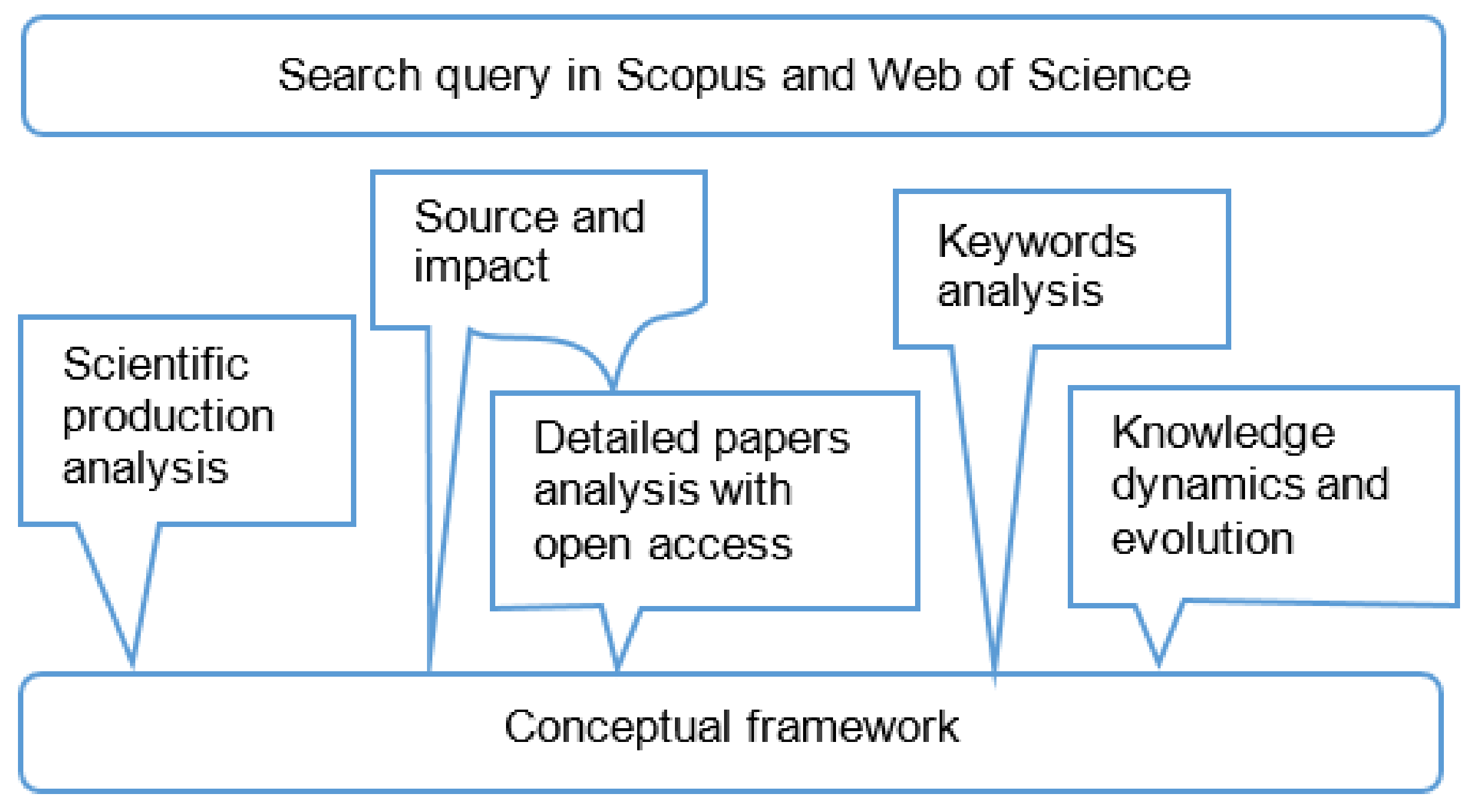
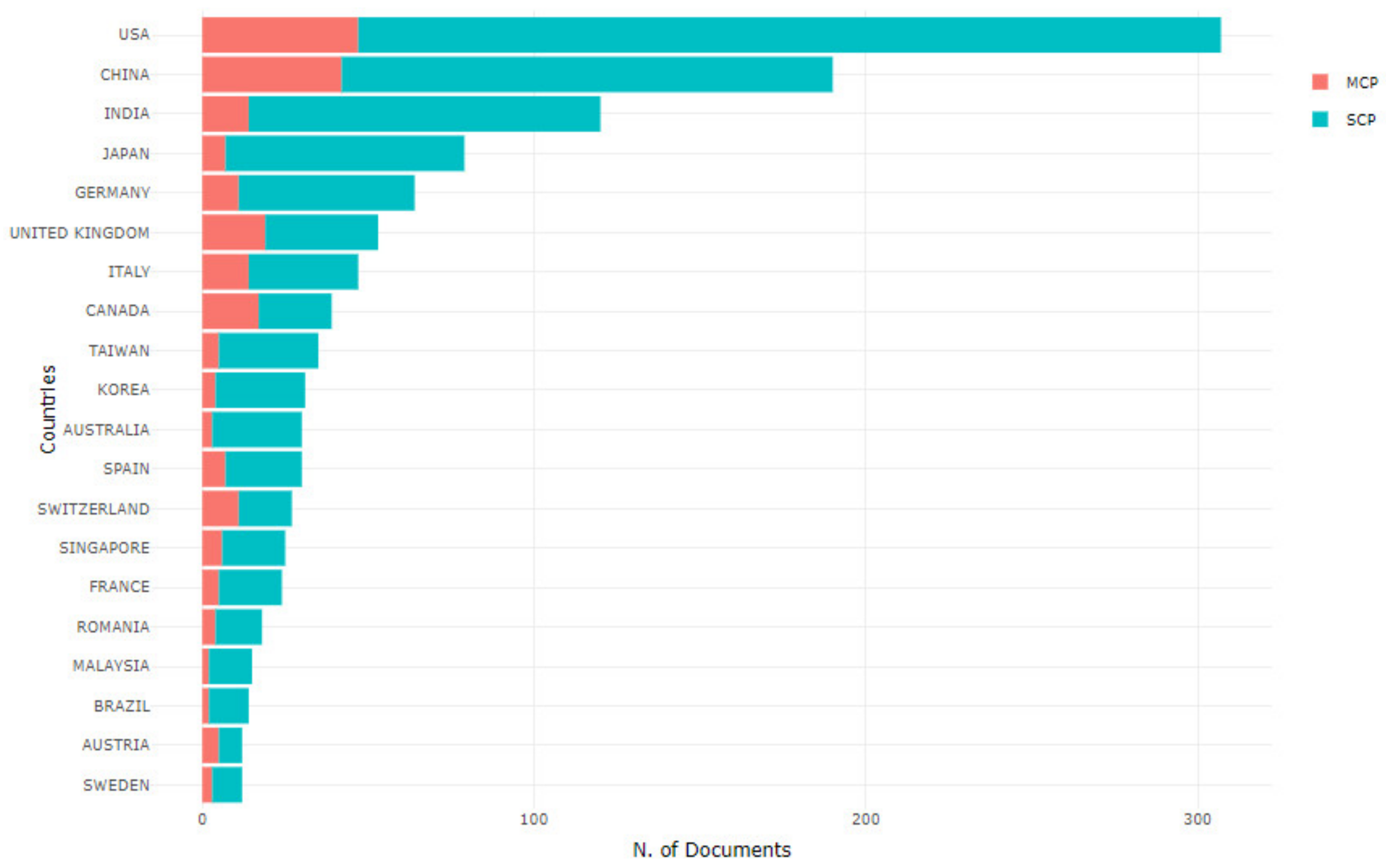
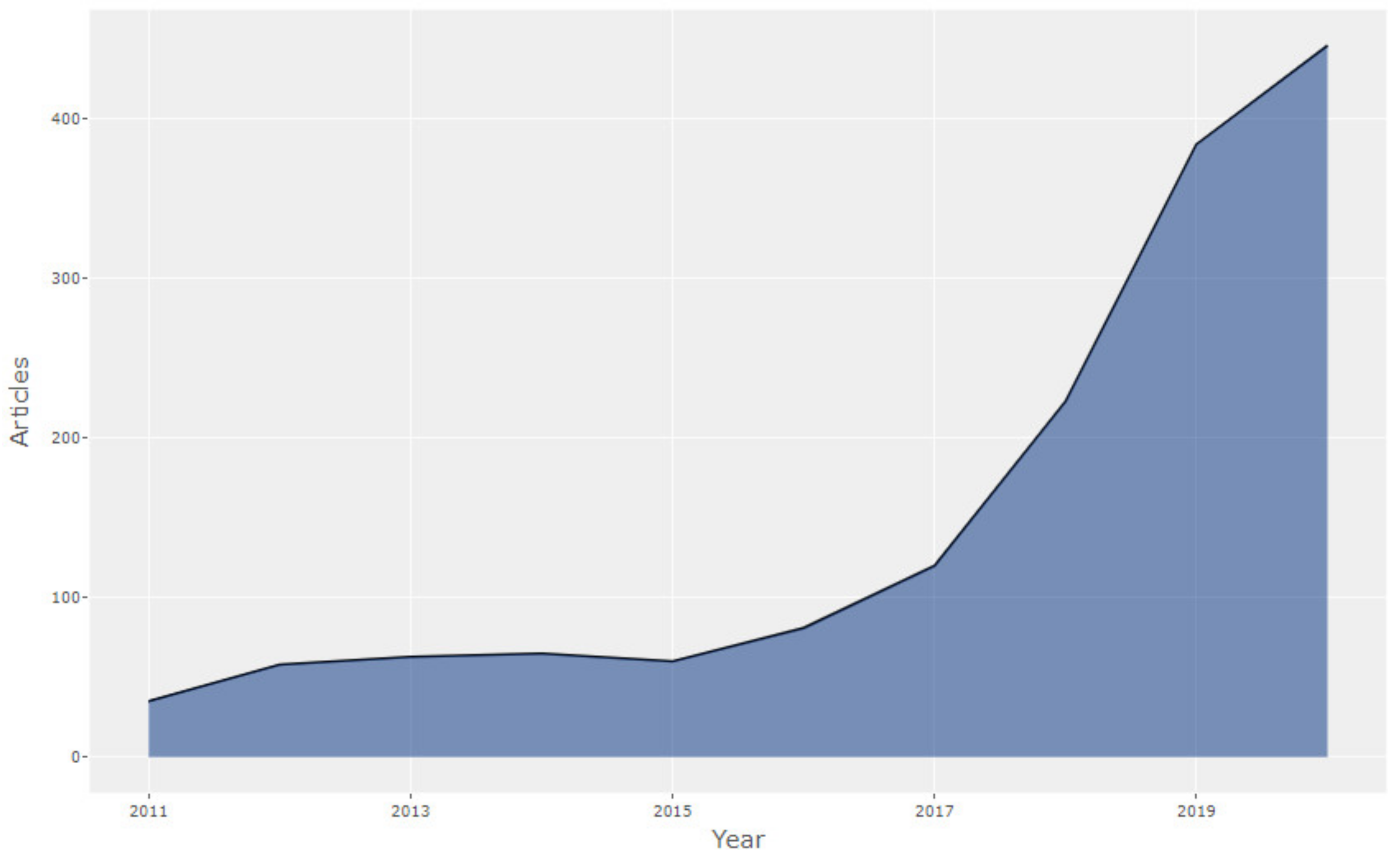
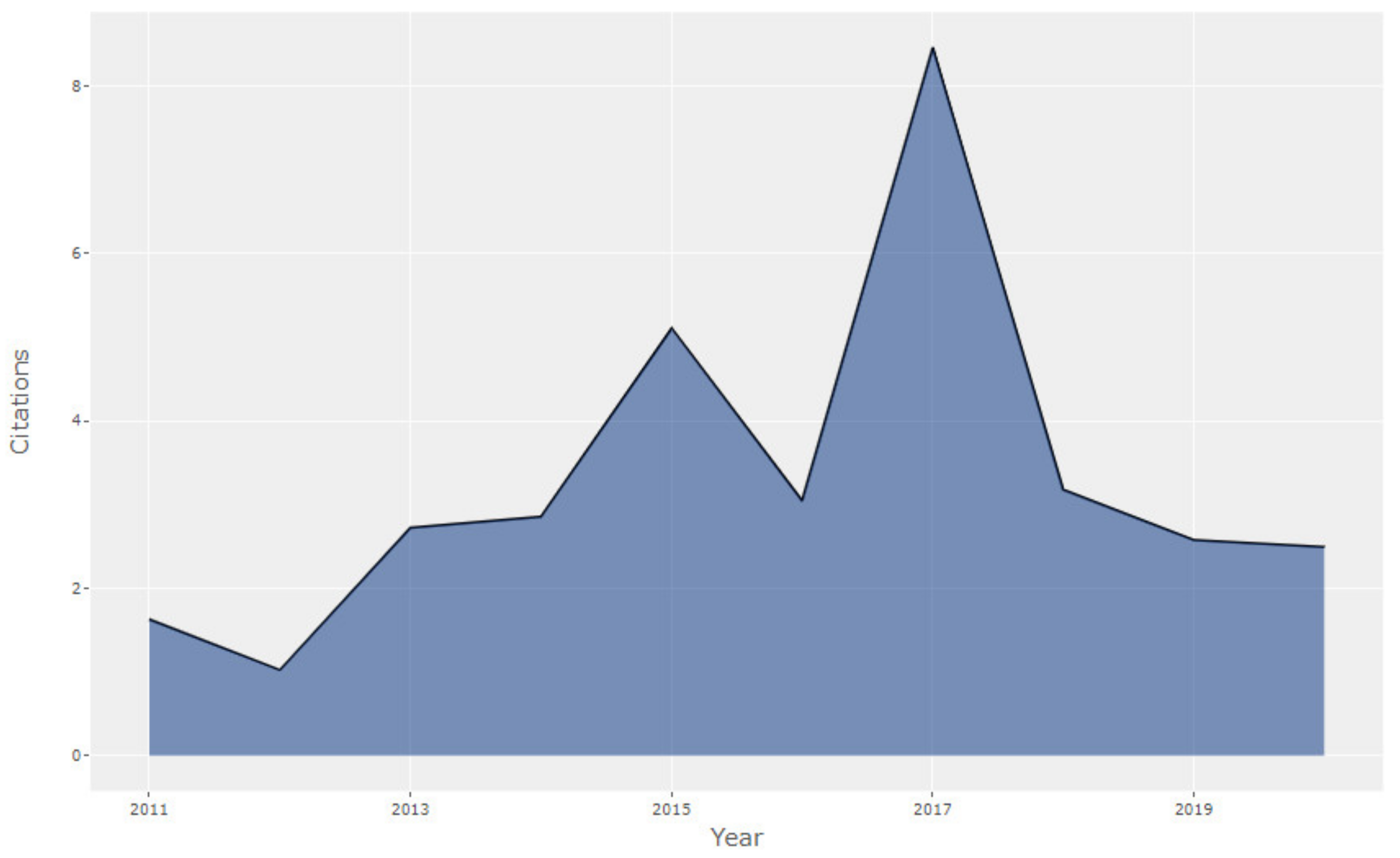
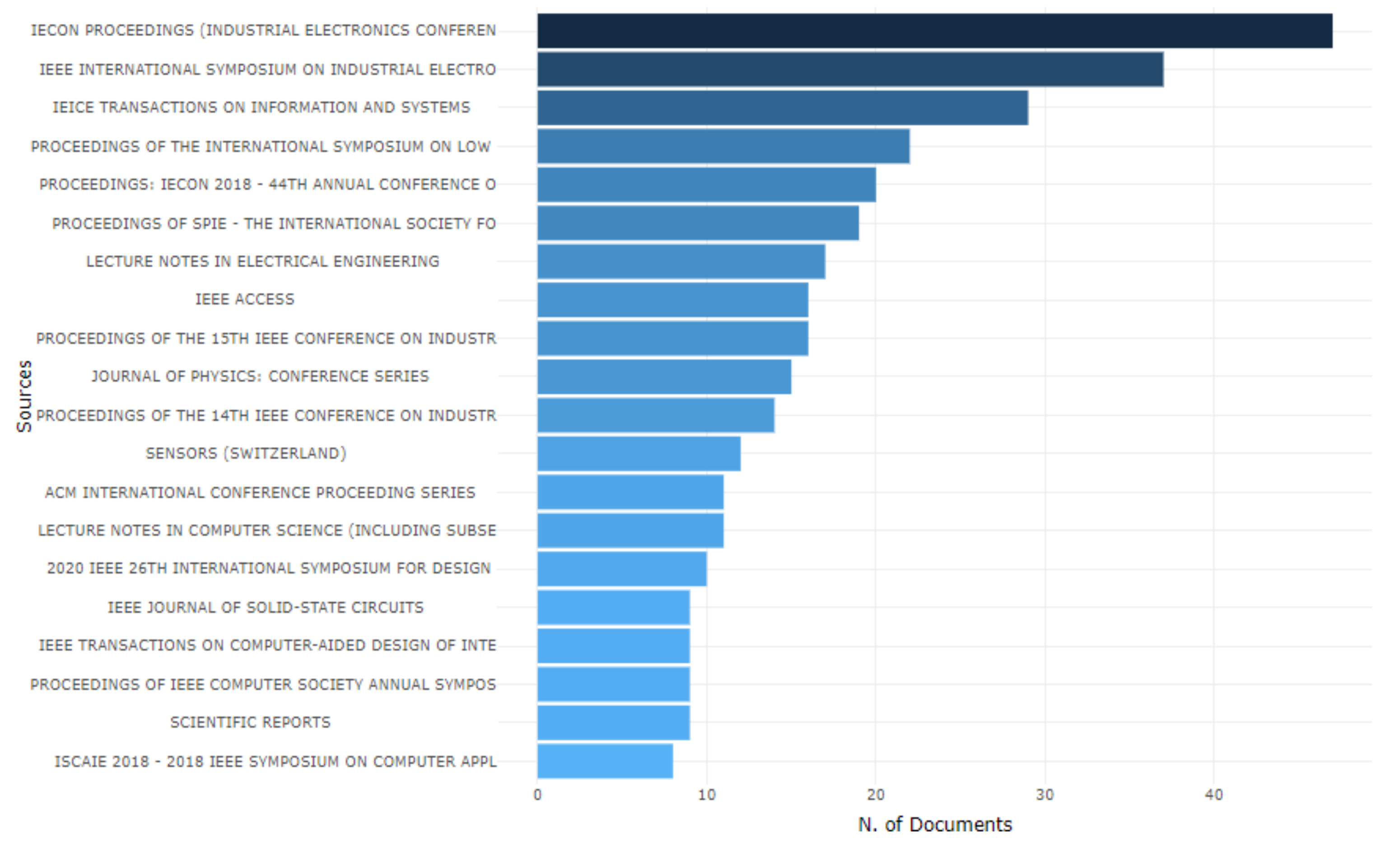
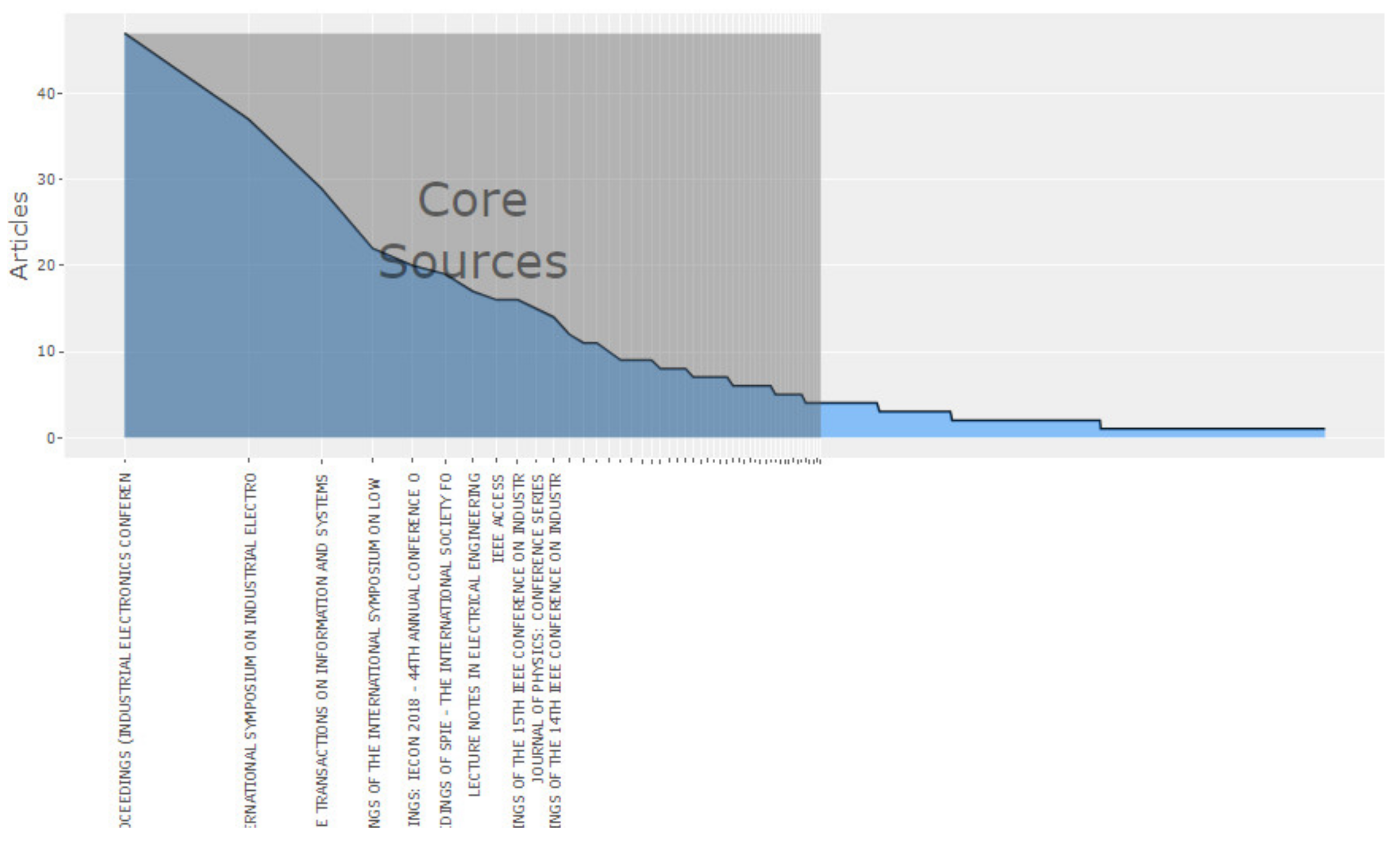
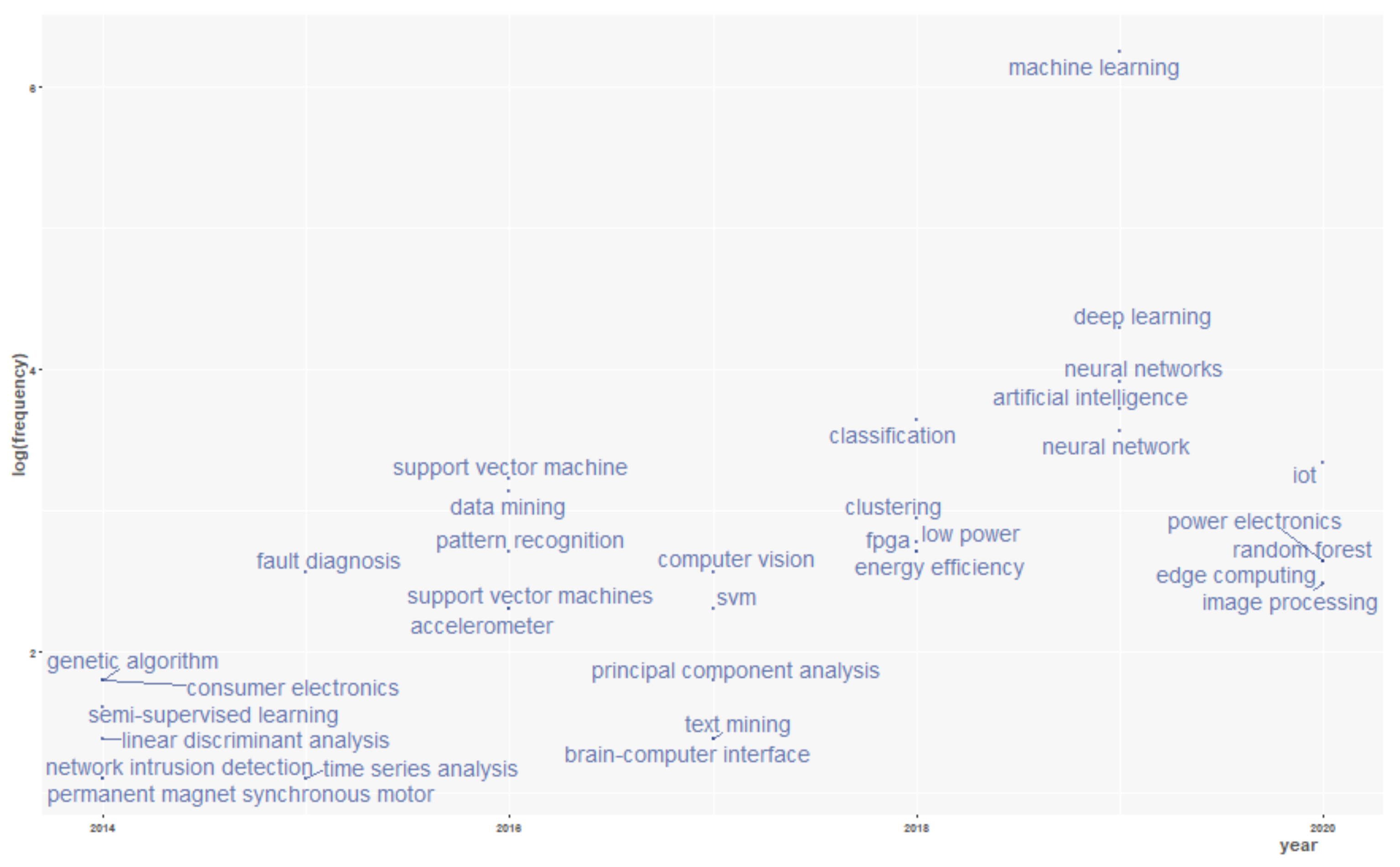
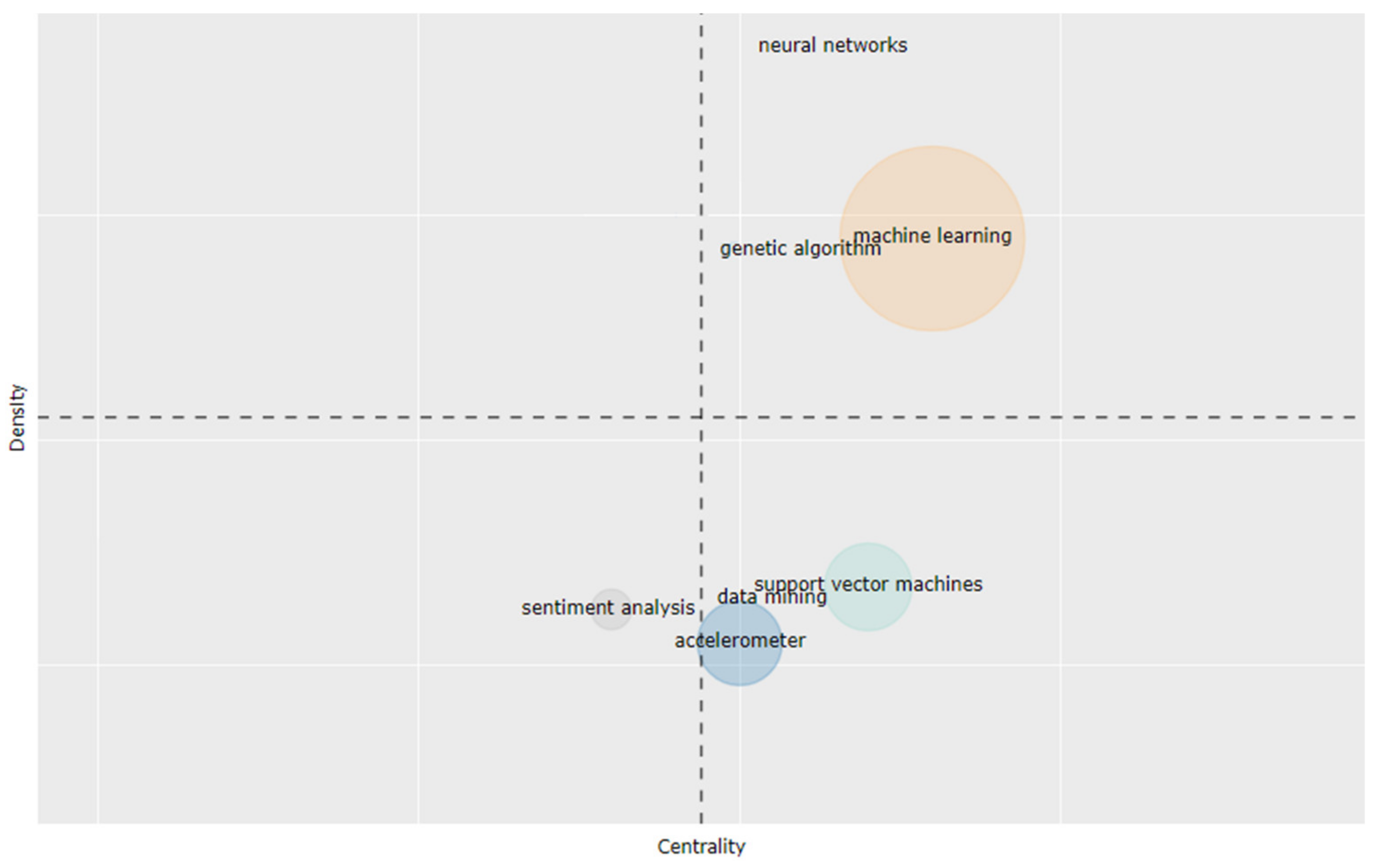
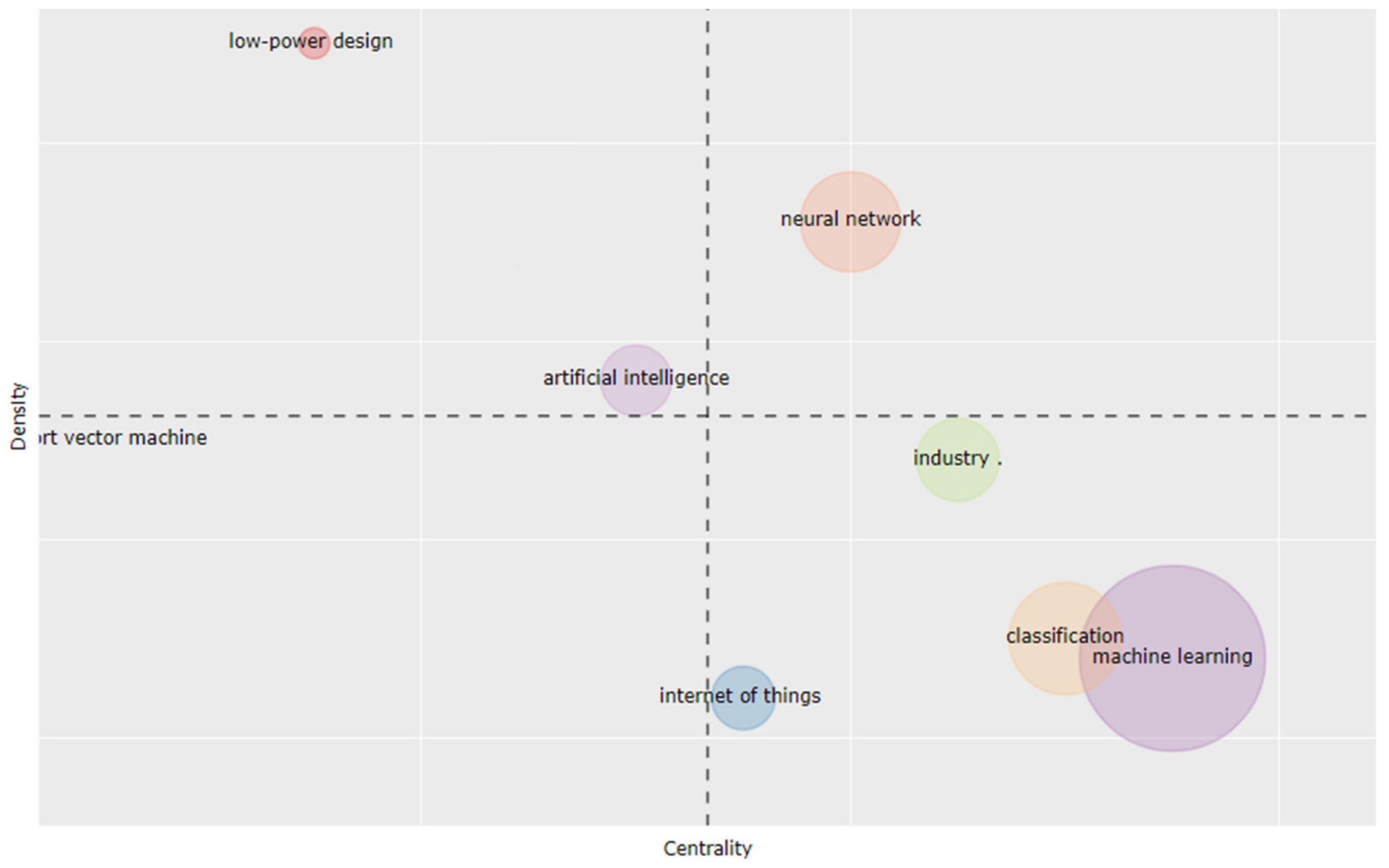

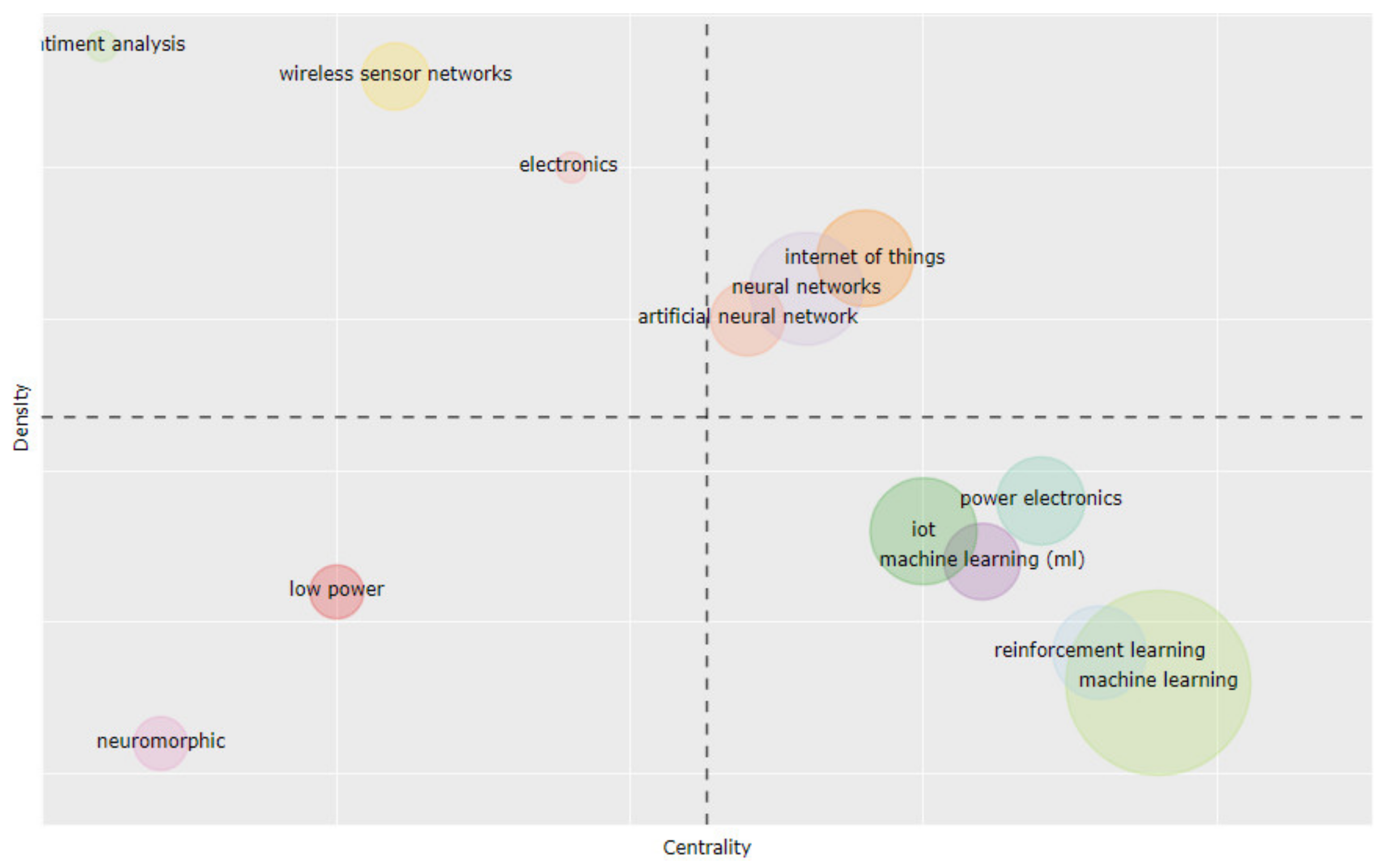
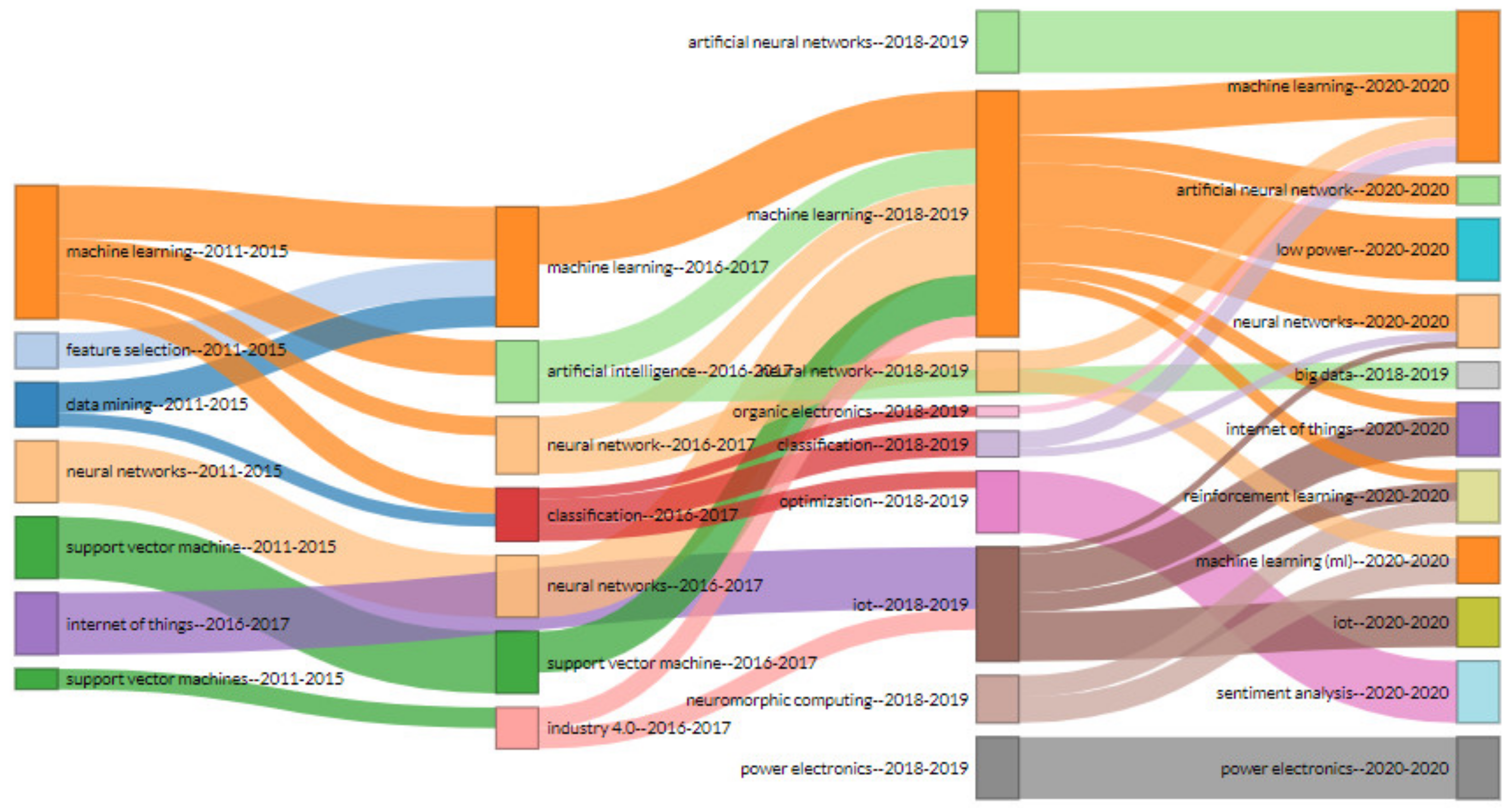
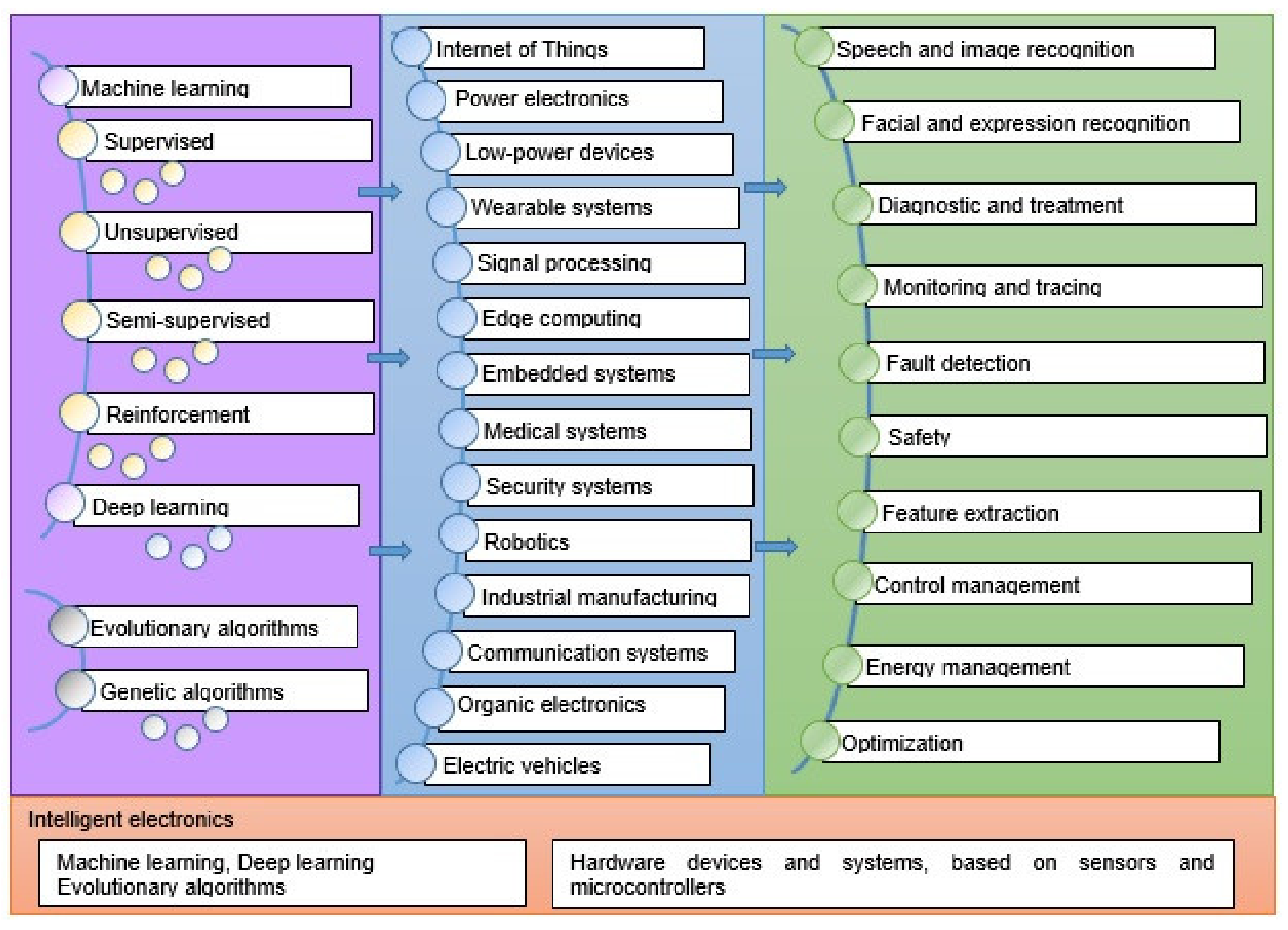
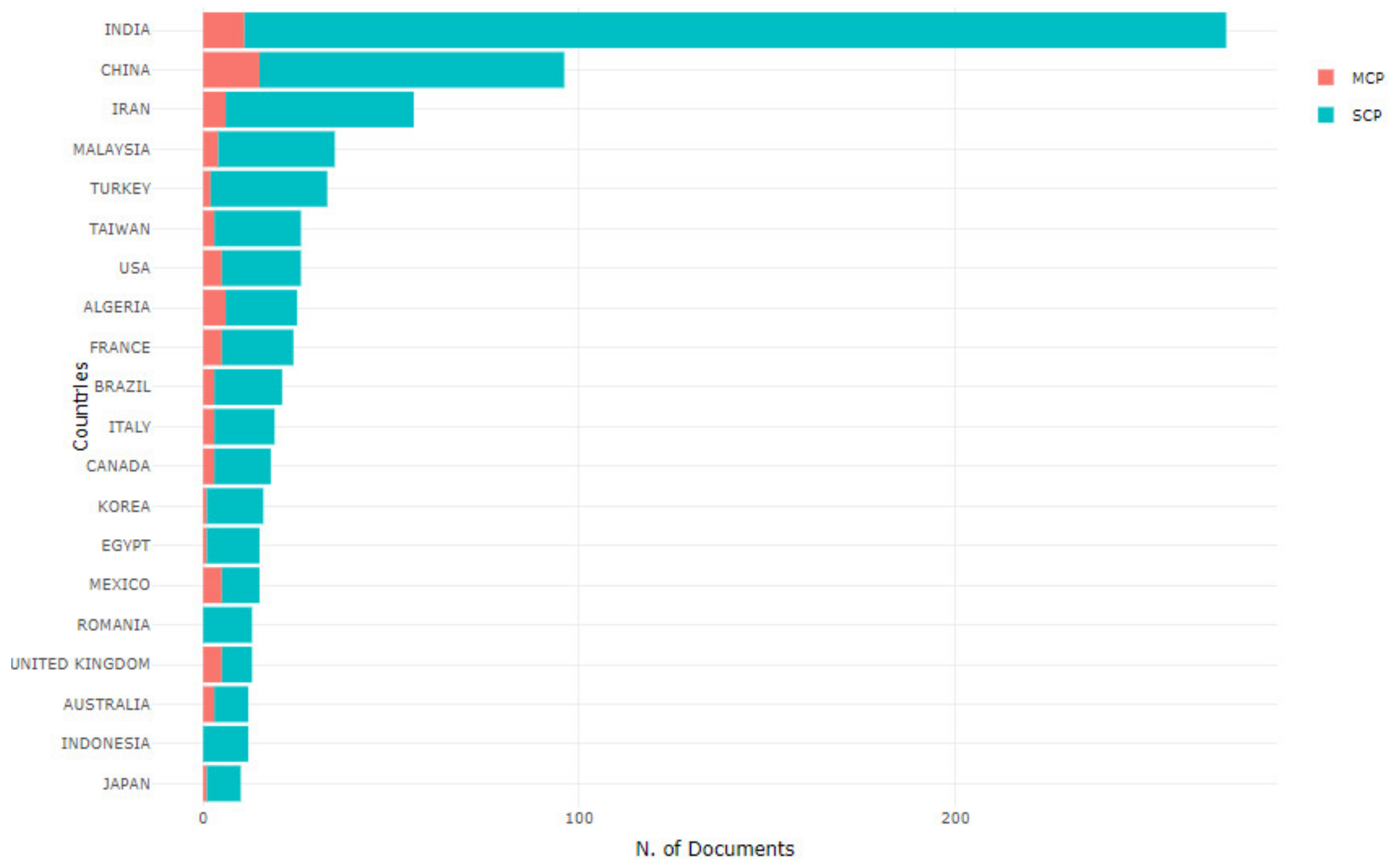

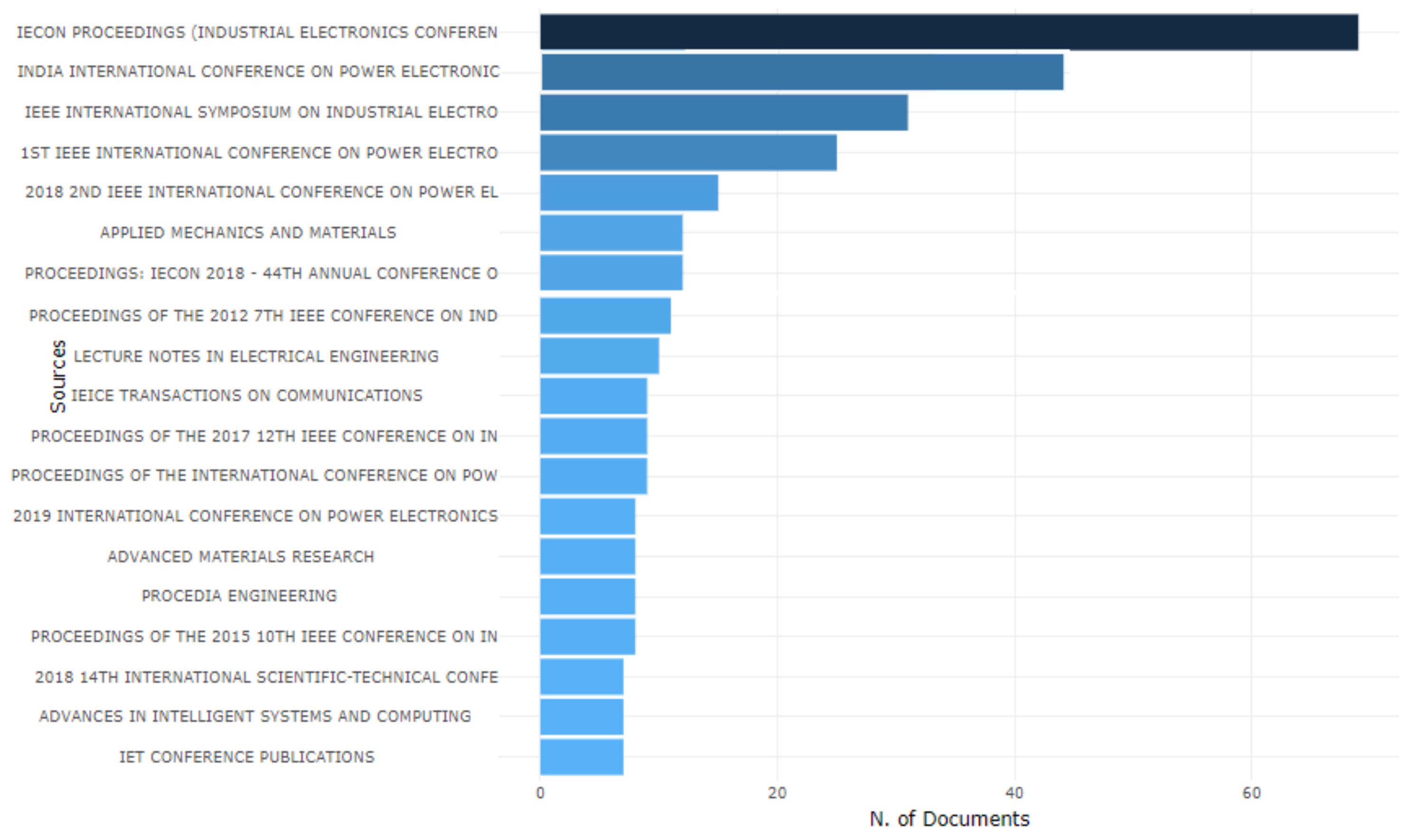
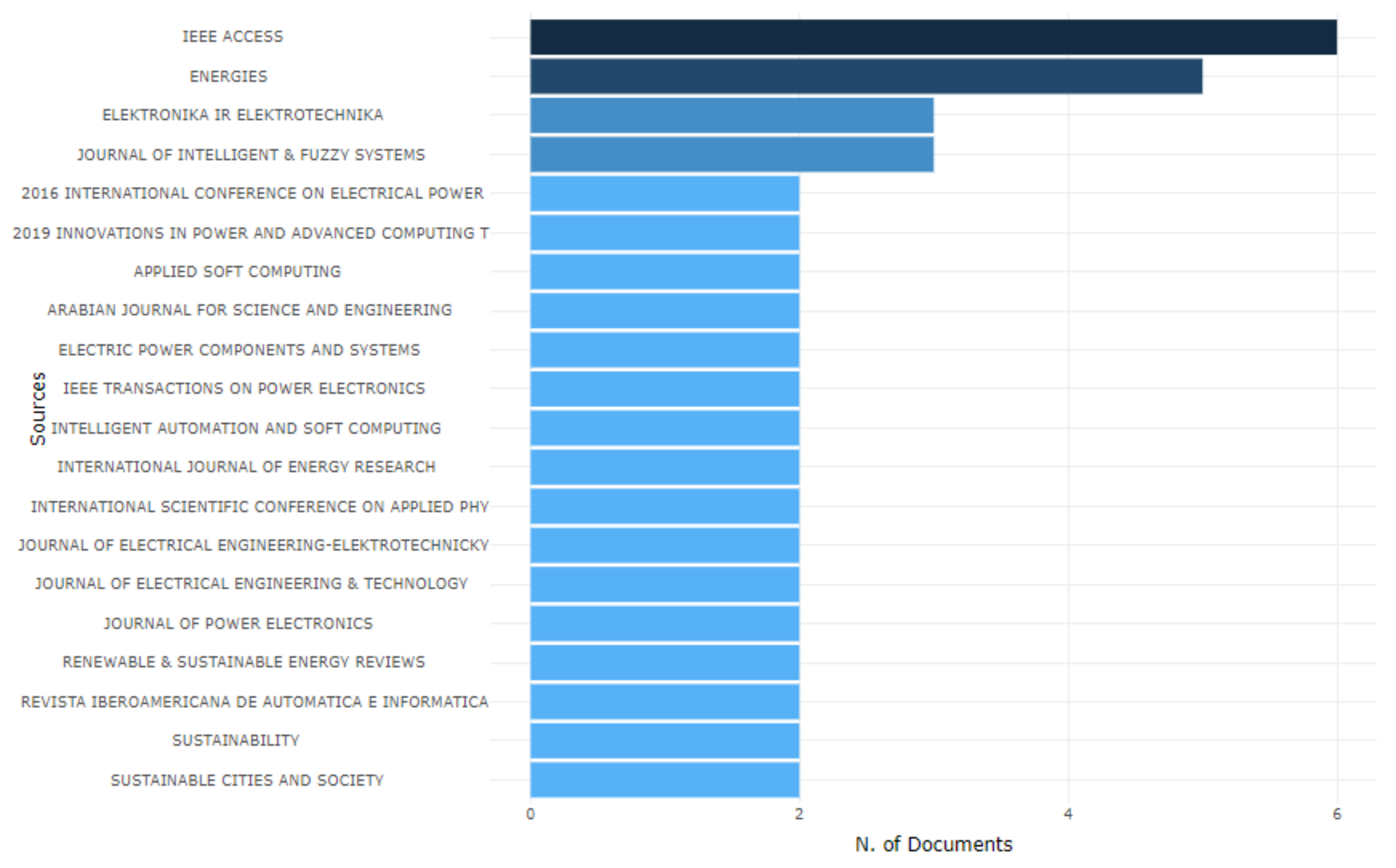
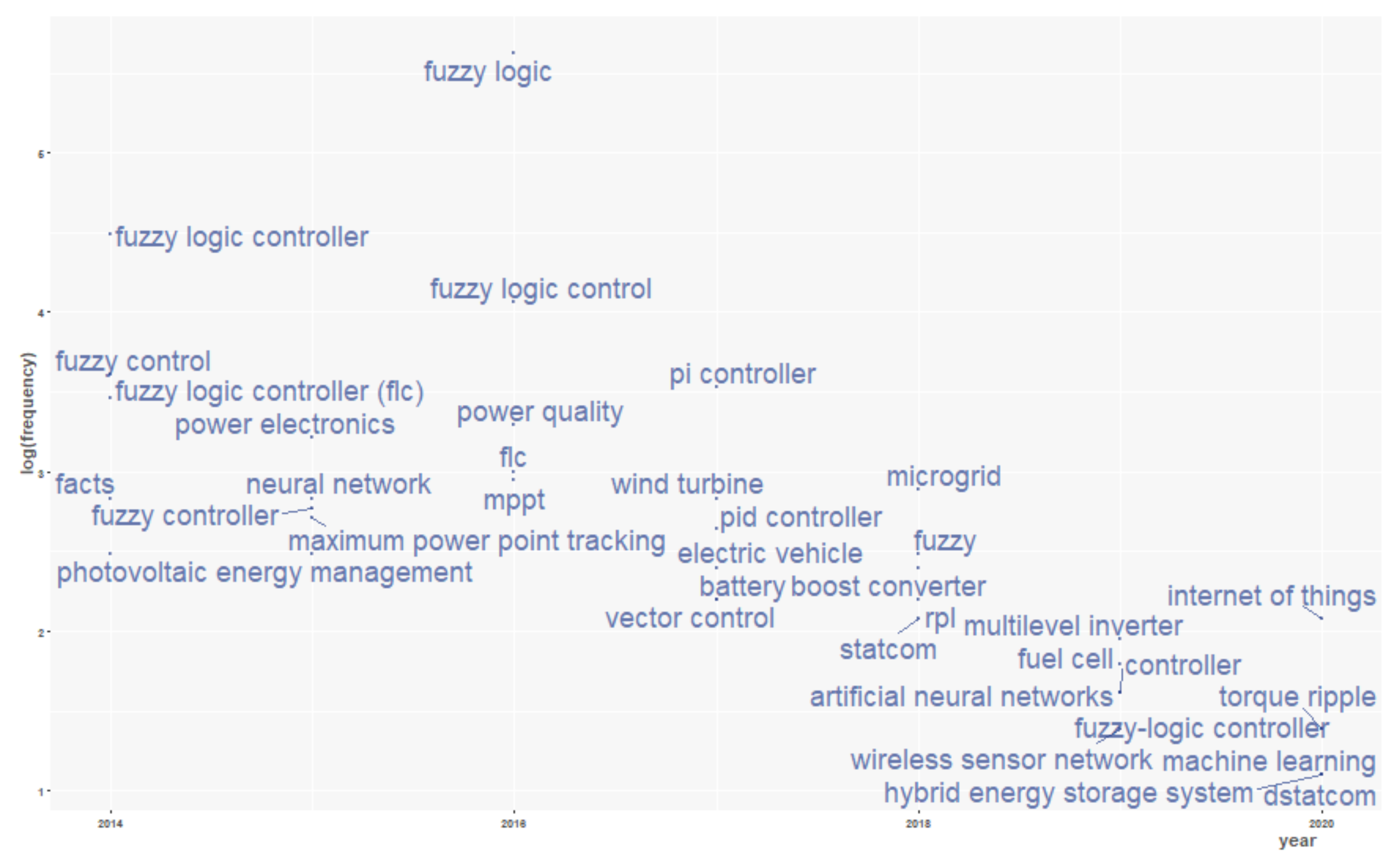

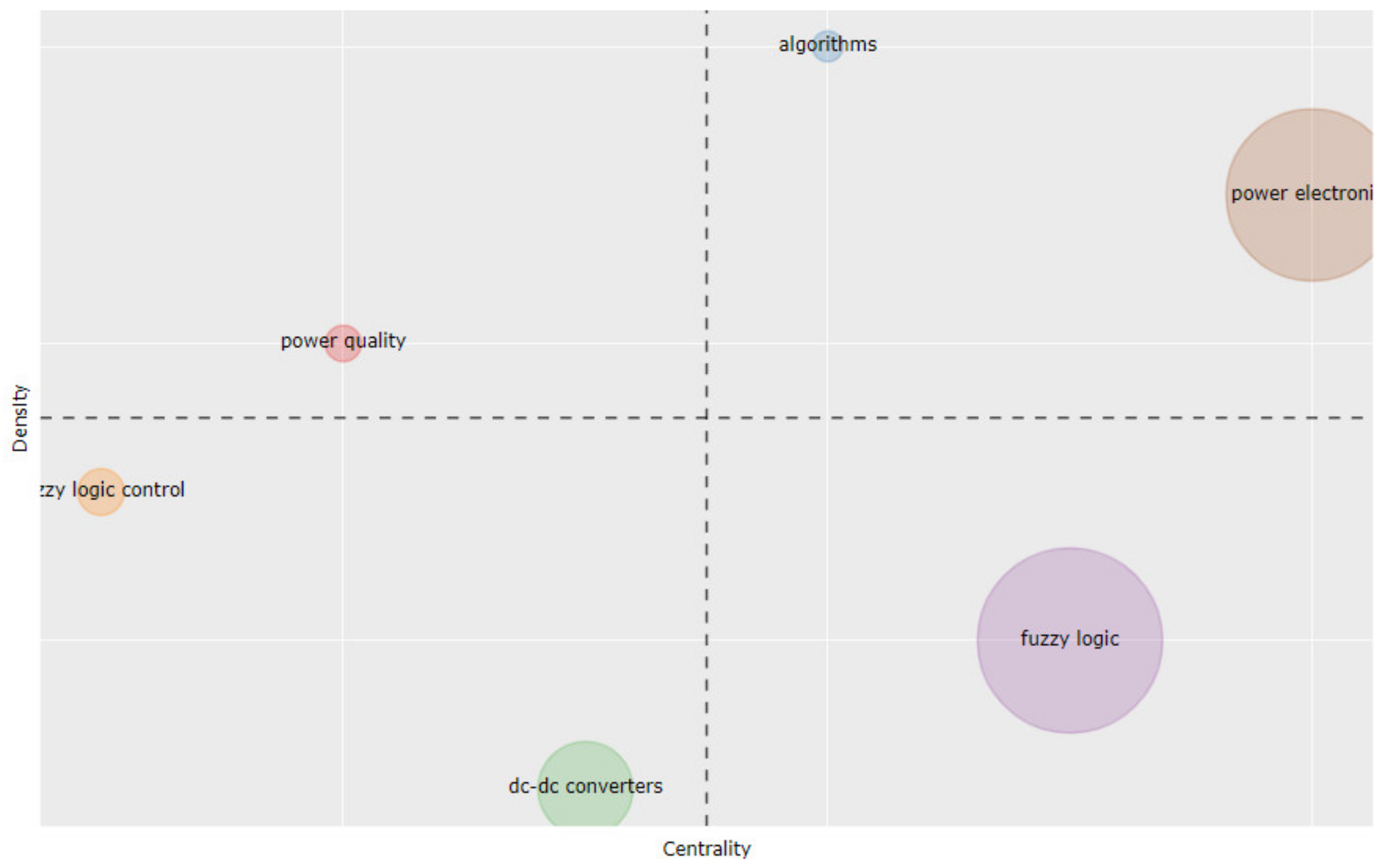
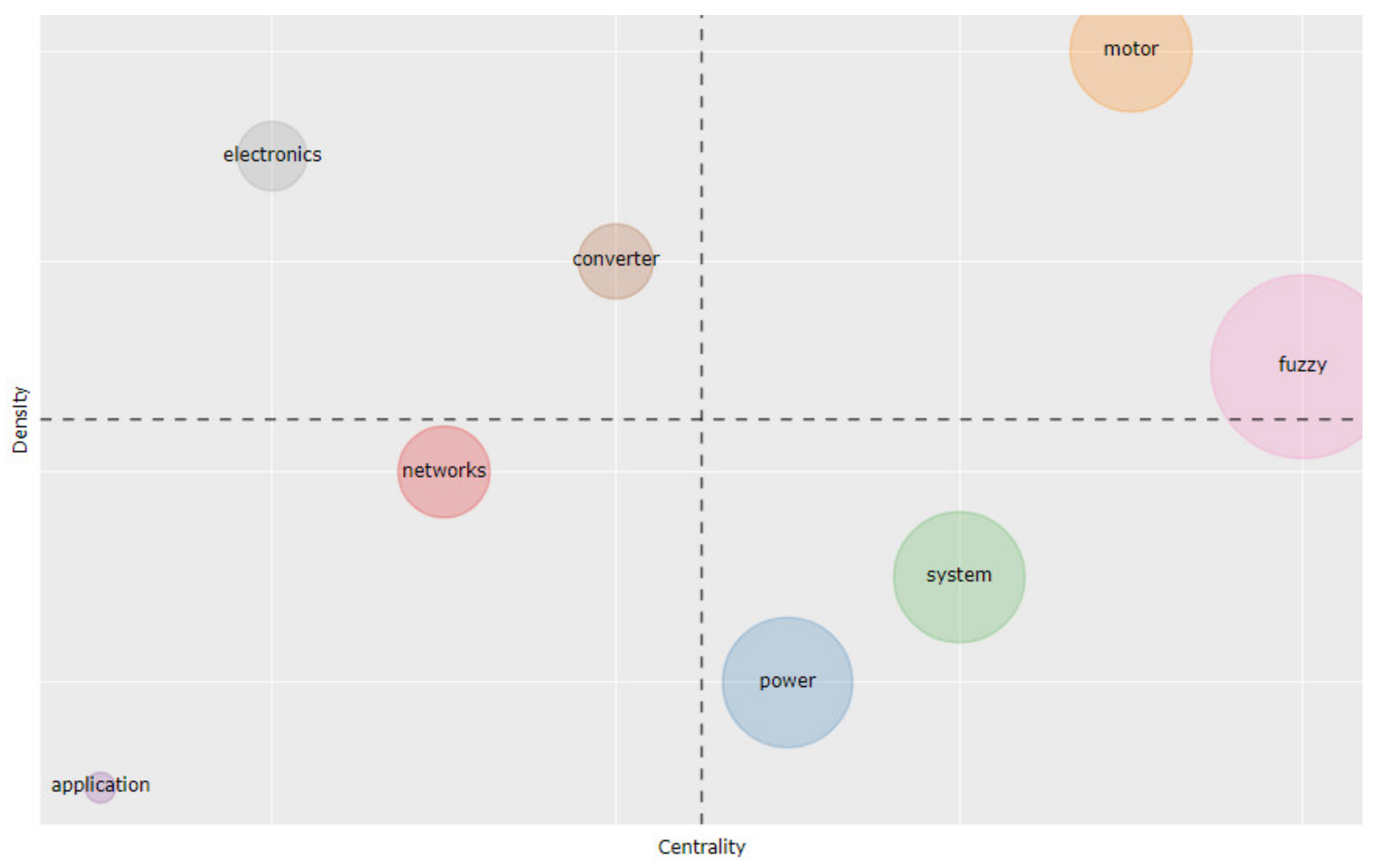
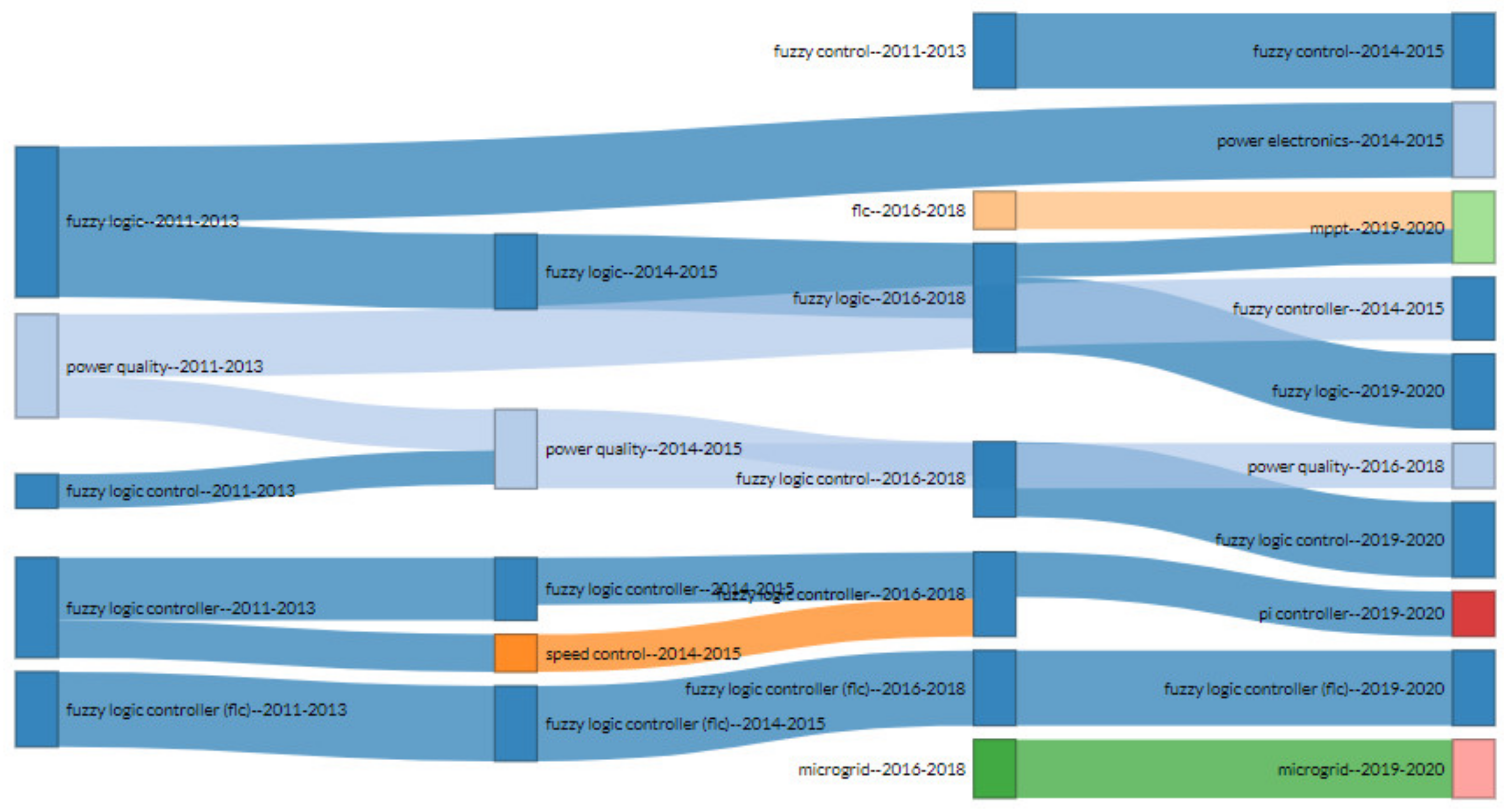
| Source | h-Index |
|---|---|
| Nature Communications (Scopus) | 365 |
| Physical Review A (Scopus) | 283 |
| IEEE Journal of Solid-State Circuits (Scopus) | 215 |
| Scientific Reports (Scopus) | 213 |
| Proceedings of SPIE—The International Society for Optical Engineering (Scopus) | 176 |
| Sensors (Switzerland) (Scopus and Web of Science) | 172 |
| Neural Networks (Scopus) | 148 |
| Neurocomputing (Scopus) | 143 |
| IEEE Access (Scopus and Web of Science) | 127 |
| IEEE Transactions on Computer-Aided Design of Integrated Circuits and Systems (Scopus) | 119 |
| Energies (Web of Science) | 93 |
| Journal of Physics: Conference Series (Scopus) | 85 |
| IECON Proceedings (Industrial Electronics Conference) (Scopus) | 71 |
| Proceedings of the International Symposium on Low Power Electronics and Design (Scopus) | 61 |
| IEEE International Symposium on Industrial Electronics (Scopus) | 53 |
| Applied Sciences (Web of Science) | 52 |
| IEICE Transactions on Information and Systems (Scopus) | 49 |
| Electronics (Web of Science) | 36 |
| Elektronika ir Elektrotechnika (Web of Science) | 26 |
| Proceedings of IEEE Computer Society Annual Symposium On VLSI, ISVLSI (Scopus) | 26 |
| Author’s Keywords and Frequency of Occurrences | |
|---|---|
| machine learning—522 | deep learning—73 |
| neural networks—50 | artificial intelligence—41 |
| classification—38 | Internet of Things—34 |
| support vector machine—27 | low power—23 |
| clustering—19 | feature extraction—17 |
| convolutional neural networks—17 | energy efficiency—17 |
| anomaly detection—16 | fpga—15 |
| reinforcement learning—16 | edge computing—15 |
| pattern recognition—15 | random forest—14 |
| sentiment analysis—14 | power electronics—14 |
| fault diagnosis—13 | computer vision—13 |
| neuromorphic computing—13 | image processing—12 |
| spiking neural networks—11 | wireless sensor networks—11 |
| robotics—10 | Internet of Things—10 |
| support vector machine—10 | organic electronics—9 |
| Keyword Plus and Their Occurrences | |
|---|---|
| learning systems—692 | machine learning—508 |
| artificial intelligence—329 | low power electronics—280 |
| learning algorithms—254 | neural networks—220 |
| industrial electronics—213 | energy efficiency—120 |
| classification of information—118 | deep learning—115 |
| forecasting—112 | Internet of Things—112 |
| power electronics—104 | support vector machines—103 |
| electronics industry—100 | electronics—94 |
| data mining—90 | decision trees—76 |
| Source | h-Index |
|---|---|
| Applied Soft Computing (Web of Science) | 143 |
| IEEE Access (Web of Science) | 127 |
| Energies (Web of Science) | 93 |
| Procedia Engineering (Scopus) | 74 |
| IECON Proceedings (Industrial Electronics Conference) (Scopus) | 71 |
| IEICE Transactions on Communications (Scopus) | 56 |
| IEEE International Symposium on Industrial Electronics (Scopus) | 53 |
| Applied Sciences (Web of Science) | 52 |
| Proceedings of the International Conference on Power Electronics and Drive Systems (Scopus) | 38 |
| Electronics (Web of Science) | 36 |
| Turkish Journal of Electrical Engineering and Computer Sciences (Web of Science) | 30 |
| Journal of Electrical Engineering and Technology (Web of Science) | 27 |
| Elektronika ir Elektrotechnika (Web of Science) | 26 |
| Proceedings of the 2012 7th IEEE Conference on Industrial Electronics and Applications, ICIEA 2012 (Scopus) | 15 |
| Author’s Keywords and Occurrences | |
|---|---|
| fuzzy logic—279 | fuzzy logic controller—93 |
| fuzzy logic control—60 | fuzzy logic controller flc—37 |
| fuzzy control—37 | pi controller—36 |
| power quality—27 | power electronics—26 |
| mppt (maximum power point tracker)—19 | microgrid—18 |
| neural network—17 | wind turbine—17 |
| pid controller—14 | induction motor—14 |
| energy management—12 | photovoltaic—12 |
| boost converter—11 | artificial intelligence—11 |
| DC–DC converter—11 | electric vehicle—11 |
| Keywords Plus and Occurrences | |
|---|---|
| fuzzy logic—904 | power electronics—371 |
| controllers—328 | computer circuits—283 |
| fuzzy logic controllers—261 | industrial electronics—214 |
| fuzzy logic control—118 | fuzzy inference—110 |
| power control—94 | DC–DC converters—88 |
| electric inverters—81 | low power electronics—71 |
| algorithms—63 | power quality—54 |
| neural networks—52 | photovoltaic cells—51 |
| electric drives—51 | electric power transmission networks—50 |
| wind power—50 | electric machine control—49 |
Publisher’s Note: MDPI stays neutral with regard to jurisdictional claims in published maps and institutional affiliations. |
© 2021 by the authors. Licensee MDPI, Basel, Switzerland. This article is an open access article distributed under the terms and conditions of the Creative Commons Attribution (CC BY) license (https://creativecommons.org/licenses/by/4.0/).
Share and Cite
Ivanova, M.; Petkova, P.; Petkov, N. Machine Learning and Fuzzy Logic in Electronics: Applying Intelligence in Practice. Electronics 2021, 10, 2878. https://doi.org/10.3390/electronics10222878
Ivanova M, Petkova P, Petkov N. Machine Learning and Fuzzy Logic in Electronics: Applying Intelligence in Practice. Electronics. 2021; 10(22):2878. https://doi.org/10.3390/electronics10222878
Chicago/Turabian StyleIvanova, Malinka, Petya Petkova, and Nikolay Petkov. 2021. "Machine Learning and Fuzzy Logic in Electronics: Applying Intelligence in Practice" Electronics 10, no. 22: 2878. https://doi.org/10.3390/electronics10222878
APA StyleIvanova, M., Petkova, P., & Petkov, N. (2021). Machine Learning and Fuzzy Logic in Electronics: Applying Intelligence in Practice. Electronics, 10(22), 2878. https://doi.org/10.3390/electronics10222878






